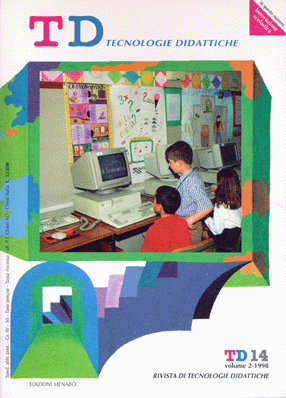New technologies for teacher training
Main Article Content
Abstract
Article Details
Authors who publish with this journal agree to the following terms:
- Authors retain copyright and grant the journal right of first publication with the work simultaneously licensed under a Creative Commons CC BY 4.0 Attribution 4.0 International License.
- Authors are able to enter into separate, additional contractual arrangements for the non-exclusive distribution of the journal's published version of the work (e.g., post it to an institutional repository or publish it in a book), with an acknowledgement of its initial publication in this journal.
- Authors are permitted and encouraged to post their work online (e.g., in institutional repositories or on their website) prior to and during the submission process, as it can lead to productive exchanges, as well as earlier and greater citation of published work (See The Effect of Open Access)
References
Artigue M. (1998), Teacher training as a key issue for the integration of computer technologies, to be published in the book “Secondary School Mathematics in the World of Communication Technology: Learning, Teaching and the Curriculum”, B. R. Hodgson, D. Tinsley (eds)., Chapman & Hall, IFIP Series.
Briano R., Midoro V., Trentin G. (1997), Computer Mediated Communication and On-line Teacher Training in Environmental Education, Journal of Information Technology for Teacher Education, vol. 6, N° 2.
Bottino R.M., Chiappini G. (1998), “Tecnologia e Innovazione nella Didattica della Matematica”, Tecnologie Didattiche, Edizioni Menabò, TD 13, Vol. 1, pp.47-53.
Bottino R.M., Chiappini G. (1997), La natura della mediazione offerta dai sistemi basati su micromondi all’apprendimento della matematica Parti I e II, L’Insegnamento della Matematica e delle Scienze Integrate, Vol. 20A-B, N.6, 1997, pp.772-838.
Bottino R.M., Forcheri P., Molfino M.T., Technology Transfer in School: from Research to Innovation, British Journal of Educational Technology (BJET), Blackwell Publishers, Vol 29, issue 2, April 1998, pp. 163-172.
Collis B. (1997), Experiences with WWW-Based Environments for Collaborative Group Work and the Relationship of these Experiences to HCI Research, in Dicheva D. & Stanchev I. (eds.): Proceedings of IFIP WG. 3.3 Working Conference on Human Interaction and Educational Tools, Sozopol (Bulgaria), pp. 137-150.
Fernandez-Manjon B., Fernandez-Valmayor A. (1997), Improving World Wide Web educational uses promoting hypertext and standard general markup language content-based features, Education and Infromation Technologies, Official Journal of the IFIP Technical Committee on Education, D. Watson, B. Samways and H. Jobe (eds), Chapman & Hall, Vol. 2, n. 3, pp. 193- 206.
Hoyles C. (1992), Mathematics teaching and mathematics teachers: a meta-case study, For the learning of Mathematics, 12, n.3, pp.32-44.
Spitzer D.R., “Rediscovering the Social Context of Distance Learning”, Educational Technology, March- April 1998, pp. 52-56.
Taylor, H. G., Aiken, R. M. and van Weert, T. J. (1991), Informatics education in secondary schools, IFIP WG 3.1 Guidelines for Good Practice, IFIP TC3.
Tharp R. G., Gallimore R. (1989), Rousing minds to life, Cambridge University Press.
Trentin G. (1996), Didattica in Rete, Roma: Garamond.

